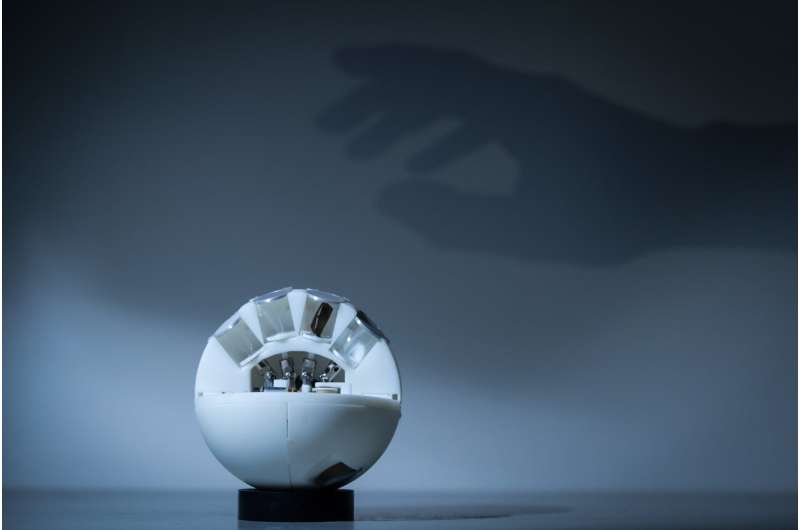
The performance and realism of virtual reality (VR) technology has significantly improved over the past decade, allowing users to immerse themselves in digital content in ways that were previously inaccessible. The technology will most likely continue to evolve over the next few years, introducing additional features and components that further engage the five senses.
Researchers at Westlake University, the Westlake Institute for Advanced Study and other universities in China recently created a new haptic device that could increase the fidelity and realism of virtual experiences. This device, presented in Nature Machine Intelligence, is partly inspired by the Asian paper-folding art of origami.
“I am always interested in trending topics, not just from academia, but also from industry sectors,” Hanqing Jiang, one of the researchers who carried out the study, told Tech Xplore. “Since 2019, I have been following the latest technology breakthroughs in AR/VR areas. In additional to visual and audio perceptions, mechanical sensation, specifically touching, is an important component, but it is still missing in the existing technologies.”
The key objective of the recent work by Jiang and his colleagues was to create a haptic device that could allow users to also detect the stiffness of the objects they encounter in virtual environments. To do this, the team draw inspiration from origami, the art of folding paper to create specific 3D shapes or figures.
“When I was at Arizona State University, my group studied curved origami and used it to tune stiffness in 2020,” Jiang said. “This work inspired us to combine origami and the metaverse. We didn’t have detailed plans on how to make it work at that time. After I joined Westlake University in 2021, I gained the bandwidth to greatly expand my own group, including mechanical engineers, and electrical engineers, and came up with a detailed plan to replicate active mechanical sensation using curved origami for the metaverse.”
The origami-based curved device created by Jiang and his colleagues allows users to feel similar sensations to those they would feel if they were touching different objects in real life, replicating the softness or stiffness of these objects, as well as any positive or negative tactile sensations. Compared to other haptic devices introduced in the past, this system could allow humans to have touch-related experiences as they actively interact with objects in virtual environments, rather than simply producing tactile sensations when their hands are still.
The device can be easily synchronized with specific VR content to produce perfectly timed tactile sensations and change what users perceive when they are interacting with different objects or environments. In addition to re-producing what humans might feel when touching harder or softer objects, it can create sensations of crushing by a user.
“The key component of our system is a curved origami panel,” Jiang explained. “To change the stiffness simultaneously with the scenes in the VR/AR environments, motors are used to change the angles between the origami panels. We attained what could be referred to as ‘active mechanical sensation.’ In the past, dominating technologies used vibration to replicate touching sensation, which is passive. However, we, human, use active sensation to interact with the physical environments and our system could better reflect this.”
The researchers have so far evaluated their device in a series of preliminary tests, assessing its ability to create immersive tactile experiences. Their results suggest that it outperformed other existing haptic devices that primarily utilize vibration to produce tactile sensations.
In the future, their unique origami-based design could be used to further advance the performance of VR technology. Meanwhile, Jiang and his team plan to continue working on their device to effectively re-create other tactile sensations.
“We now plan to bring in multi-modal sensations, including active touching, texture, temperature, etc.,” Jiang added.
More information:
Zhuang Zhang et al, Active mechanical haptics with high-fidelity perceptions for immersive virtual reality, Nature Machine Intelligence (2023). DOI: 10.1038/s42256-023-00671-z
© 2023 Science X Network
Citation:
An origami-based haptic device that could enhance virtual reality experiences (2023, June 14)
retrieved 14 June 2023
from https://techxplore.com/news/2023-06-origami-based-haptic-device-virtual-reality.html
This document is subject to copyright. Apart from any fair dealing for the purpose of private study or research, no
part may be reproduced without the written permission. The content is provided for information purposes only.
For all the latest Technology News Click Here
For the latest news and updates, follow us on Google News.

